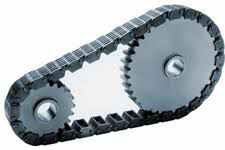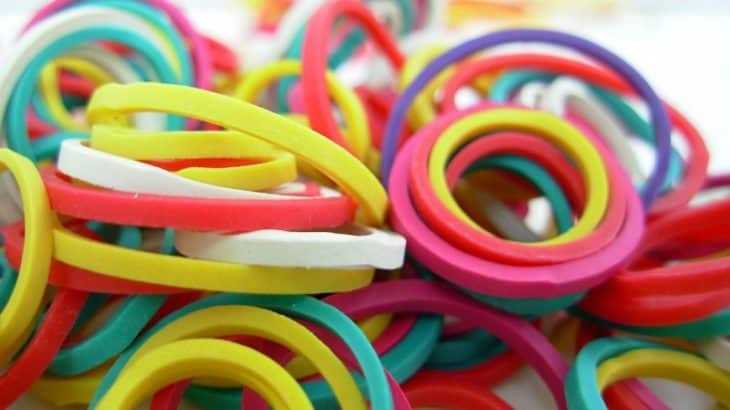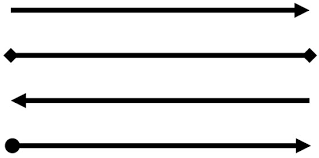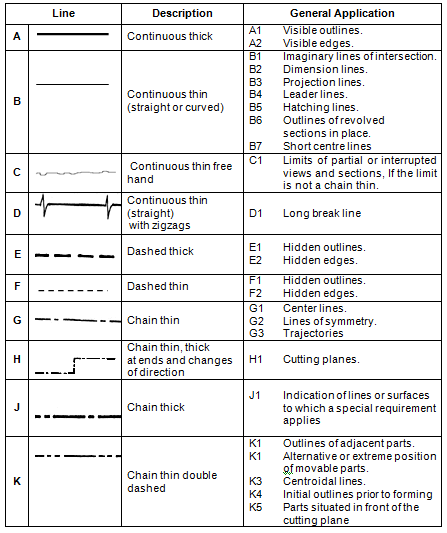 Alfred Ajibola
-3rd March, 2020 @ 1:07 PM
Alfred Ajibola
-3rd March, 2020 @ 1:07 PM
Topics in Basic Technology
Definitions of technology and their explanations Examples of technology Forms of technology explained with their differences Types of chain drive Types of belt drive Types of Ceramics Advantages and Disadvantages of Chain Drives Len Academy Questions for Basic Technology JSS3, 2nd Term Len Academy Basic Technology Questions, JSS3 Belt and Pulley Drives: Types of belt in belt drives Refrigerator as an electromechanical device, its parts and operations What is chain drive? Classification of chain drive What are Belt Drives? Advantages and Disadvantages of Belt Drives Type of Lines in Technical Drawings Len Academy questions for Basic Technology, JSS2, 2nd Term Len Academy questions for Basic Technology JSS2, 2nd Term, Part 2 What is Maintenance? Types of Maintenance Hardwood and Softwood - Characteristics and Examples What are Ceramics? Characteristics of CeramicsAcademic Questions in Basic Technology
The _____ functions to remove excess heat from the refrigerator.
A. Evaporator
B. Compressor
C. Condenser
D. Expansion Valve
E. Thermostat
F. Defrost System
A fluid or gas that runs through the compartments of a refrigerator is termed _____.
A. Water vapor
B. Liquid vapor
C. Frost
D. Refrigerant
E. Compressed water
F. Evaporated water
Current flows through a path called _____.
A. Electricity
B. Electric Route
C. Electrolysis
D. Transformer
E. High Tension
F. Electric Circuit
Googles are safety wears.
A. True
B. False
Which of the following is false concerning advanced ceramics?
A. They can be made from metallic oxides
B. They are very hard and durable
C. They are corrosion resistant
D. They are fired in the presence of oxygen
E. They are fired at a very high temperature of about 1700oC
F. They can be made from non-oxides such as carbides and borides
A thin continuous line is used for representing the followings except _____.
A. Intersections
B. Hatching lines
C. Long breaks
D. Diagonal line used to state plane surfaces
E. Leader lines
F. Back section lines

With regards to chain drives, the diagram above is a/an _____ chain.
A. Roller
B. Silent
C. Leaf
D. Flat-top
E. Detachable
F. Acceleration
A type of chain drive commonly used in bicycles is the _____ chain.
A. Roller
B. Silent
C. Leaf
D. Flat-top
E. Detachable
F. Acceleration
The belt drives are frictional drives that transmit mechanical energy on a dry surface from one shaft to another in a pulley-like system. An instance of a belt drive is shown in the image below.

For the belt drive to work properly, both sides of the shaft must be dry and separated by some distance.
Please read on the advantages and disadvantages of belt drives here.
Note: Either shafts (also referred to as the pulleys) on which the belt drives are attached do not necessarily need to rotate at the same speed; neither must they be of the same size.
You can read on chain drives here.
The tension between both sides of the belt will depend heavily on the angle of contact. To this end, the tight side of the belt drive is always below while the slack (or loose) side stays above. They are shown in the image below.

The area of belt having a lesser tension (less tightly stretched) is generally referred to as the slack side while that having a higher tension (more tightly stretched) is termed the tight side. You can think of tension as the level of tightness at which something is stretched.
Please read on the concepts of force and motion here.
In belt drives, mechanical power is usually transmitted from the driving pulley to the driven pulley via a rotational motion. Since belt drives are used in conjunction with pulleys, some of the mechanisms or machines that utilizes belt drives include:
Pepper grinder
Sewing machines
Industrial generators
Car engines
Turntables (or record players)
Washing machines
Treadmills
Textile machines
You can read on the refrigerator and its mechanism of operation here.
The belts used in machines utilizing the belt drive system can be of the following types:

Materials used in making the various kinds of belt drives include rubber, plastic, fabric, leather and other synthetic materials.
Kindly share this article via the links below:

Please click here to contact Alfred if you require any of the following services:
If you need a standard website at an affordable price.
Online training on the academic subjects: biology, chemistry and basic science.
If you require an advanced smart school management system (web application) for your school.
Click here to read on Len Academy Smart School Software.
Please click here to follow Len Academy on Google News.
Amazing facts in Basic Technology

Rubber bands last longer when refrigerated
Lighter was invented before matches
Johann Wolfgang Dobereiner was credited with the invention of lighter in 1826 while the match was made 3 years later
Volkswagen group of companies own some of the top cars of the world. These are Audi, Bentley, Bugatti, Ducati, Lamborghini and Porsche
Notable points in Basic Technology

Arrowhead lines are lines with pointed edges at one or both ends. The pointed edges are in the form of an arrow.
Arrowhead lines are used:
At the end of dimensional lines.
As measurement lines.
A thin continuous line could be a straight or curved line. However, the main point to remember is this: 'it is a tiny line with no dot or dashes within it'.
_______________________
A thin continuous line is used for representing the followings:
Projection lines
Hatching lines
Construction lines
Short center lines
Measurement lines
Diagonal lines used to state plane surfaces
Intersections
Leader lines
Backside section lines
Any action that involves the servicing, checking, replacing and repairing of an equipment, object or device is termed maintenance.
Maintenance has two main goals. These are:
To prevent a breakdown
To repair the breakdown
Below are the types of maintenance:
Preventive maintenance
Corrective maintenance
Predictive maintenance
Periodic maintenance
Reinforcement
Overhaul

Softwoods are often derived from coniferous trees, that is: trees with needle-like leaves, and whose seeds are covered in cones.
Below are some characteristics of softwood:
Most softwood have lower densities than hardwood (weighs lower).
In terms of price, they are often less expensive than hardwood.
Their growth rate is faster than hardwood.
Most softwood do not shed their needle-like leaves during the year. However, the softwood 'larch' and 'cypress' are exceptions.
They are less fire resistant.
The diagram below shows the various types of line in technical drawing, their description and general application:

Please read more on the types of line in technical drawing here